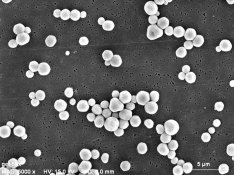wildbillbugman
Member
Dear PE,
I don't mean to beat a dead hourse, I realy don't! But I am cornfused! When you wrote "Adjust gelatin leval to desired 5-10%"
You are saying : add more gelatin? Dry or in solution?
Perhaps I did make this in class. But I have never seen such an anemic emulsion befor. By anemic, I mean soft at 33F.
Bill
I don't mean to beat a dead hourse, I realy don't! But I am cornfused! When you wrote "Adjust gelatin leval to desired 5-10%"
You are saying : add more gelatin? Dry or in solution?
Perhaps I did make this in class. But I have never seen such an anemic emulsion befor. By anemic, I mean soft at 33F.
Bill


 .
.

 , now I m waiting for time to try the 4 4x5 glass plate I coat with Osterman's method (I also do Wet plate).
, now I m waiting for time to try the 4 4x5 glass plate I coat with Osterman's method (I also do Wet plate). 